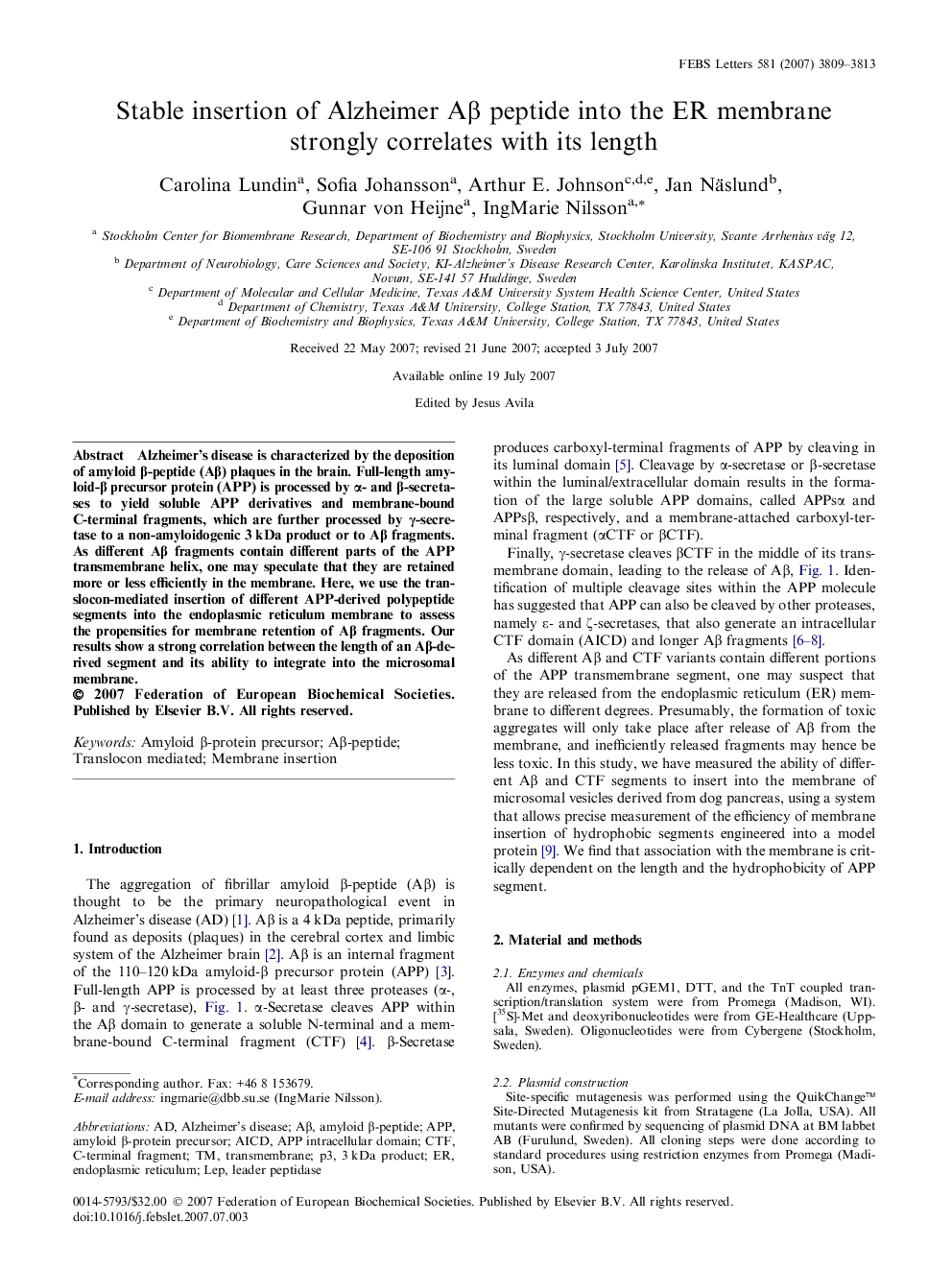| Article ID | Journal | Published Year | Pages | File Type |
|---|---|---|---|---|
| 2050637 | FEBS Letters | 2007 | 5 Pages |
Alzheimer’s disease is characterized by the deposition of amyloid β-peptide (Aβ) plaques in the brain. Full-length amyloid-β precursor protein (APP) is processed by α- and β-secretases to yield soluble APP derivatives and membrane-bound C-terminal fragments, which are further processed by γ-secretase to a non-amyloidogenic 3 kDa product or to Aβ fragments. As different Aβ fragments contain different parts of the APP transmembrane helix, one may speculate that they are retained more or less efficiently in the membrane. Here, we use the translocon-mediated insertion of different APP-derived polypeptide segments into the endoplasmic reticulum membrane to assess the propensities for membrane retention of Aβ fragments. Our results show a strong correlation between the length of an Aβ-derived segment and its ability to integrate into the microsomal membrane.
